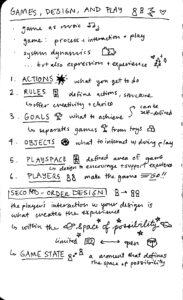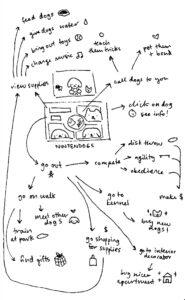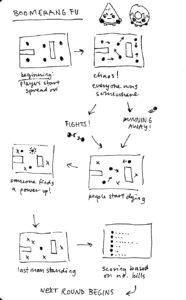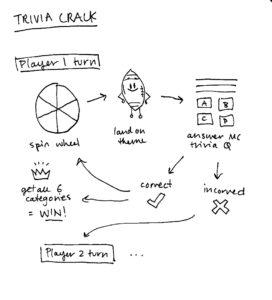
1. Identify the basic elements in a game of your choice (actions, goals, rules, objects, playspace, players).
I chose the game Connections by the NYT , which I play every day and share with my family. The actions of the game are to select 4 words and submit them, with the goal of submitting 4 words that share a common theme and eventually to find all 4 themes. The rules include that you can only submit 4 words at a time and that you only have 4 mistakes you can make before you fail. The objects are the 16 words that start the game, the playspace is the online webpage or page in the app- it’s completely digital. Finally, the players are only yourself, but the game is made to be shared so if you play to share in a groupchat there are invisible other players.
2. As a thought experiment, swap one element between two games: a single rule, one action, the goal, or the playspace. For example, what if you applied the playspace of chess to basketball? Imagine how the play experience would change based on this swap.
I imagine switching the game from a digital space to a physical space, maybe something like Scattergories. Then you could play at the same time as the other players, heightening a competitive aspect and leaning into the fellowship as you all stare at the same board at the same time. Maybe everyone is working together, or maybe everyone is competing to do it the fastest or with the fewest mistakes, maybe the answers come from pre-disposed answers or maybe there’s a game master every round who determines the winning connections. Either way, making it synchronous would add a lot more of a community aspect.
3. Pick a simple game you played as a child. Try to map out its space of possibility, taking into account the goals, actions, objects, rules, and playspace as the parameters inside of which you played the game. The map might be a visual flowchart or a drawing trying to show the space of possibility on a single screen or a moment in the game.
I drew a flowchat for the old game Nintendogs on the Nintendo DS showing all the possible actions in the space of possibility from the home screen.

4. Pick a real-time game and a turn-based game. Observe people playing each. Make a log of all the game states for each game. After you have created the game state logs, review them to see how they show the game’s space of possibility and how the basic elements interact.


I drew a log for the games Boomerang Fu and Trivia Crack (both of which I frequently lose to my boyfriend in… boooo). The game state log for Boomerang Fu contains a lot of simultaneous activity where the different “moments” could honestly be rearranged into any sequence of events (which is what makes it fun and interesting and different to play each time). The turn-based game, meanwhile, is much more limited in the sequence of possibilities.

